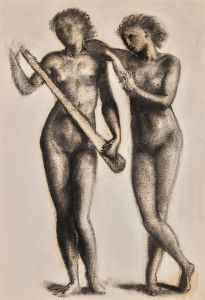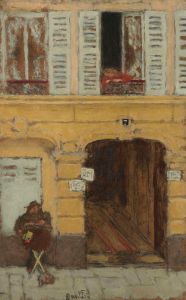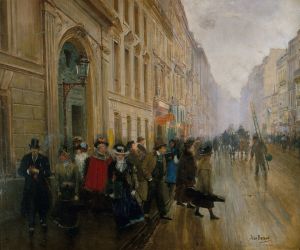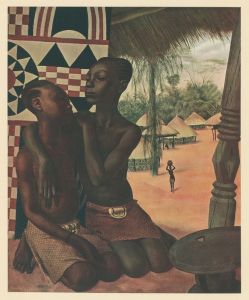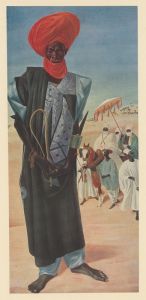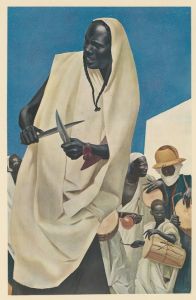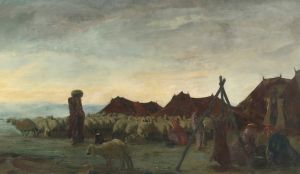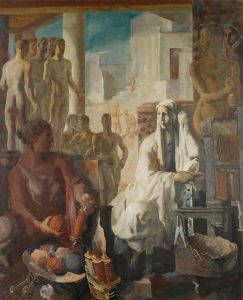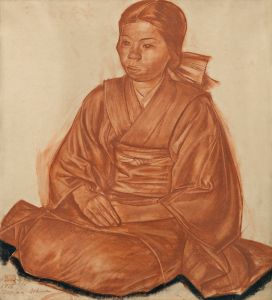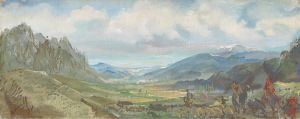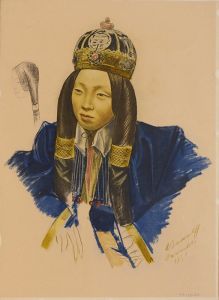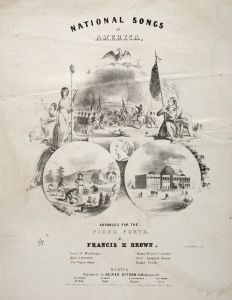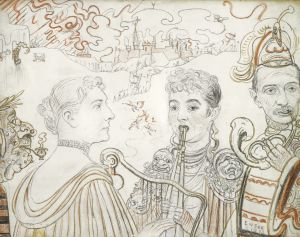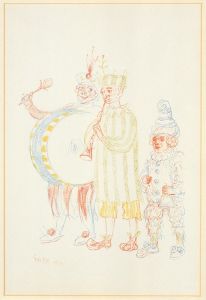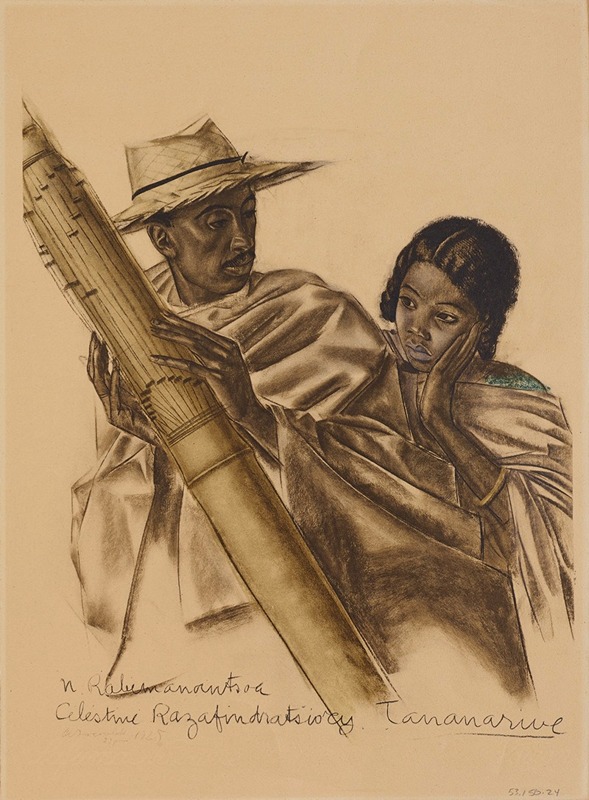
Musicians Malgaches, Tananarive
A hand-painted replica of Alexandre Jacovleff’s masterpiece Musicians Malgaches, Tananarive, meticulously crafted by professional artists to capture the true essence of the original. Each piece is created with museum-quality canvas and rare mineral pigments, carefully painted by experienced artists with delicate brushstrokes and rich, layered colors to perfectly recreate the texture of the original artwork. Unlike machine-printed reproductions, this hand-painted version brings the painting to life, infused with the artist’s emotions and skill in every stroke. Whether for personal collection or home decoration, it instantly elevates the artistic atmosphere of any space.
"Musicians Malgaches, Tananarive" is a painting created by Russian-born artist Alexandre Jacovleff (also spelled Yakovlev) during his time as part of the Citroën-sponsored "Croisière Noire" expedition in the early 1920s. This expedition, also known as the Black Cruise, was a trans-African journey that aimed to explore and document the cultures, landscapes, and peoples of the African continent, while also demonstrating the capabilities of Citroën's half-track vehicles.
Jacovleff served as the official artist for the expedition, tasked with capturing the visual essence of the places and people encountered along the way. His works from this period are celebrated for their ethnographic detail and artistic sensitivity, blending his academic training with a deep respect for the subjects he portrayed.
This particular painting, "Musicians Malgaches, Tananarive," depicts Malagasy musicians in Tananarive (now Antananarivo), the capital of Madagascar. Madagascar was one of the stops on the expedition, and Jacovleff's work from this region reflects his interest in the island's unique cultural and musical traditions. The painting showcases Jacovleff's skill in rendering human figures with precision and vitality, emphasizing the individuality and dignity of his subjects.
Jacovleff's works from the Croisière Noire, including this painting, are often noted for their ethnographic importance, as they provide a visual record of the diverse cultures encountered during the expedition. His art captures not only the physical appearance of his subjects but also the cultural context in which they lived, making his works valuable both artistically and historically.
The painting is part of a larger body of work that Jacovleff produced during and after the expedition, which has been exhibited and studied for its contribution to the understanding of early 20th-century exploration and cross-cultural encounters.





